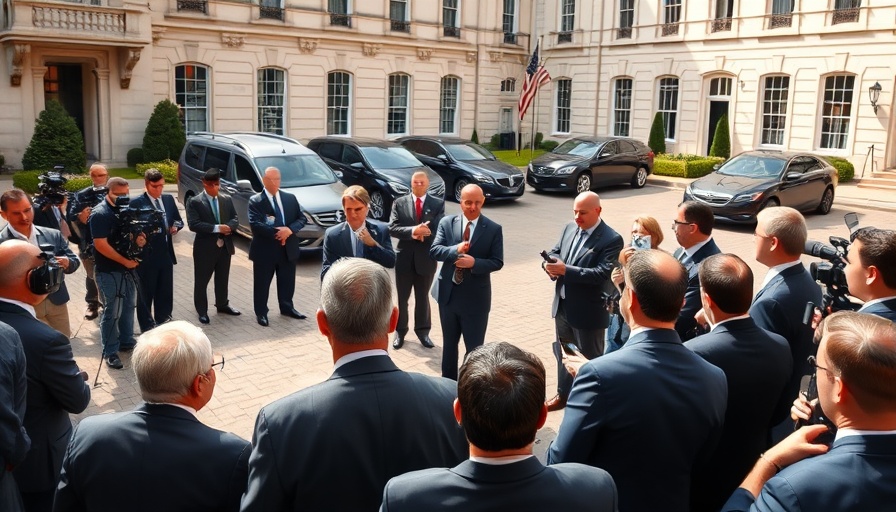
U.S. and China: A New Chapter in Trade Relations
After intense negotiations in London, the United States and China have reached a crucial framework for implementing the Geneva trade consensus. This landmark agreement signals a potential thawing of the frosty relations that have characterized trade discussions between the two nations in recent years. Representing the world's two largest economies, U.S. Commerce Secretary Howard Lutnick and China's international trade representative Li Chenggang conveyed that they are optimistic about moving forward.
The Framework’s Significance in Global Finance
This trade pact comes on the heels of a mid-May agreement where both countries took a significant step by pausing new tariffs for a period of 90 days. It is essential for those invested in global finance and trade to understand the implications of this agreement. By reducing trade barriers, both nations aim to foster economic growth, which could ripple through markets worldwide. The stability this agreement introduces is especially critical for businesses that have found themselves caught in the crossfire of U.S.-China tariffs.
What’s Next? Approval from the Leaders
While the initial consensus has been reached, the framework needs the blessings of Presidents Donald Trump and Xi Jinping. Lutnick's statement underscores the necessity of solidifying this agreement at the highest level, indicating that unresolved details may still linger. The future of this trade deal will depend significantly on how the two leaders navigate these discussions and whether they can communicate a united front to their respective stakeholders.
Potential Outcomes: Optimism vs. Uncertainty
Experts like Jianwei Xu, a senior economist at Natixis, have pointed out that while reaching an agreement on a framework indicates a commitment to dialogue, the path to concrete agreements still holds uncertainties. The business community will be closely monitoring how the plans unfold, particularly given the past challenges in trade dynamics, raising the question of whether this is a temporary reprieve or the beginning of a more collaborative relationship.
A Historical Context: The Standoff Leading to Agreement
The road to this moment has not been easy. For several years, the two countries have traded tariffs and accusations, destabilizing markets and impacting economies on a global scale. Understanding this context helps clarify why this agreement, despite its preliminary nature, represents a substantial shift in the trade discussion narrative.
Keeping an Eye on Trade Trends
This agreement could lead to significant changes in trade trends, impacting various sectors, from tech to agriculture. Businesses and investors should remain alert to how these developments may shape the market landscape in the coming months, preparing to adapt to an evolving trade environment. Understanding the implications of this agreement will be crucial for entrepreneurs and investors alike as they navigate their financial journeys.
Conclusion: An Opportunity for Optimism in Global Trade
As nations grapple with the complexities of international economics, the consensus reached by the U.S. and China offers a beacon of hope. If the trade framework is successfully approved and implemented, it could herald a new era of cooperation, creating opportunities for businesses globally. Staying informed about these developments will empower entrepreneurs and finance enthusiasts to position themselves favorably in an ever-changing landscape.
 Add Row
Add Row  Add
Add 




 Add Row
Add Row  Add
Add 

Write A Comment